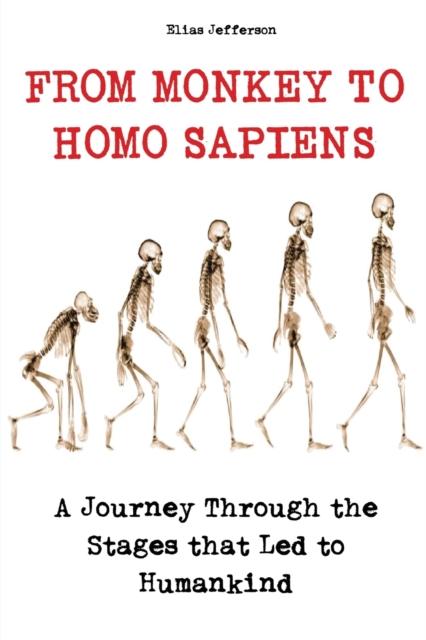
From Monkey to Homo Sapiens : A Journey Through the Stages that Led to Humankind Paperback / softback
by Elias Jefferson
Paperback / softback
Description
The origin of modern humans has probably been the most debated issue in evolutionary biology over the last few decades.
Modern humans (Homo sapiens), thespeciesthat we are, means 'wise man' in Latin. Our species is the only surviving species of the genusHomobut where we came from has been a topic of much debate. Modern humans originated in Africa within the past 200,000 years and evolved from their most likely recent common ancestor,Homo erectus, which means 'upright man' in Latin.Homo erectusis an extinct species of human that lived between 1.9 million and 135,000 years ago.
At some point in its evolutionary history, our species Homo sapiens ceased to be a nonlinguistic, nonsymbolic organism, living in the world as presented to it by Nature, and instead began to exist in a world that it reconstructs in its mind. Most scientists since Darwin have been content to explain this extraordinary transformation in human consciousness by the operation of natural selection. However, the human fossil and archaeological records indicate that modern human symbolic consciousness is not the culmination of the long trend that natural selection would predict. Instead, it shows that major change in the human past has been episodic and rare and that, as far as can be determined from the archaeological record, the passage from non-symbolic to symbolic cognition is a recent event as well as an unprecedented one. So recent, indeed, that it significantly postdates the acquisition of modern human anatomy as expressed in skeletal structure. It, thus, appears most likely that the biological (neural) capacity underwriting the radically new behavioral model arose as an incidental exaptation in the same process that produced the new skeletal structure of Homo sapiens, but that it lay unexpressed until it was "discovered" using a cultural innovation, plausibly the invention of language.
Information
-
Item not Available
- Format:Paperback / softback
- Pages:148 pages
- Publisher:Charlie Creative Lab
- Publication Date:20/11/2020
- Category:
- ISBN:9781801253901
Other Formats
- Hardback from £17.75
Information
-
Item not Available
- Format:Paperback / softback
- Pages:148 pages
- Publisher:Charlie Creative Lab
- Publication Date:20/11/2020
- Category:
- ISBN:9781801253901






